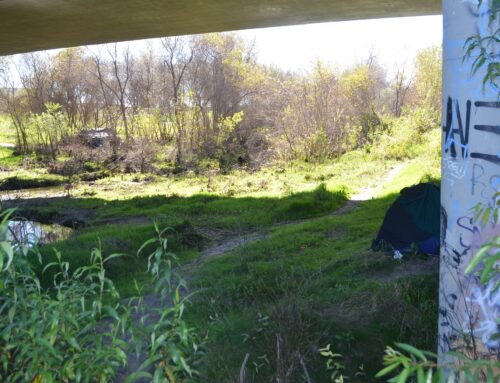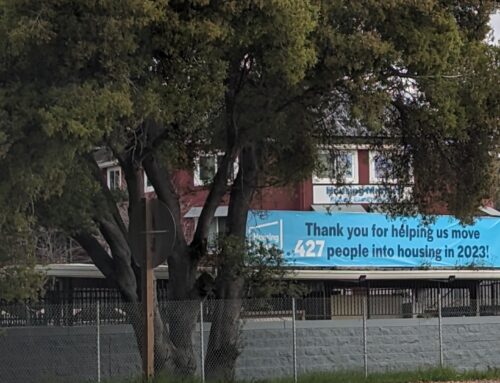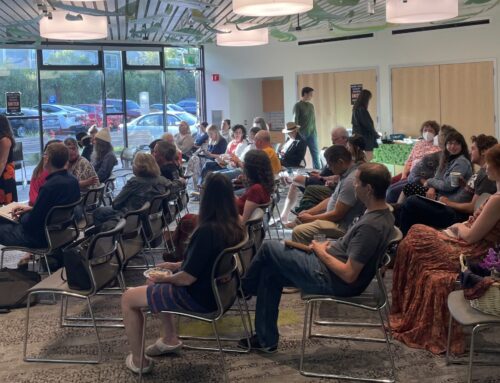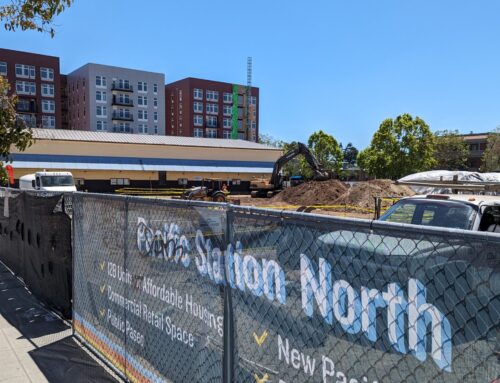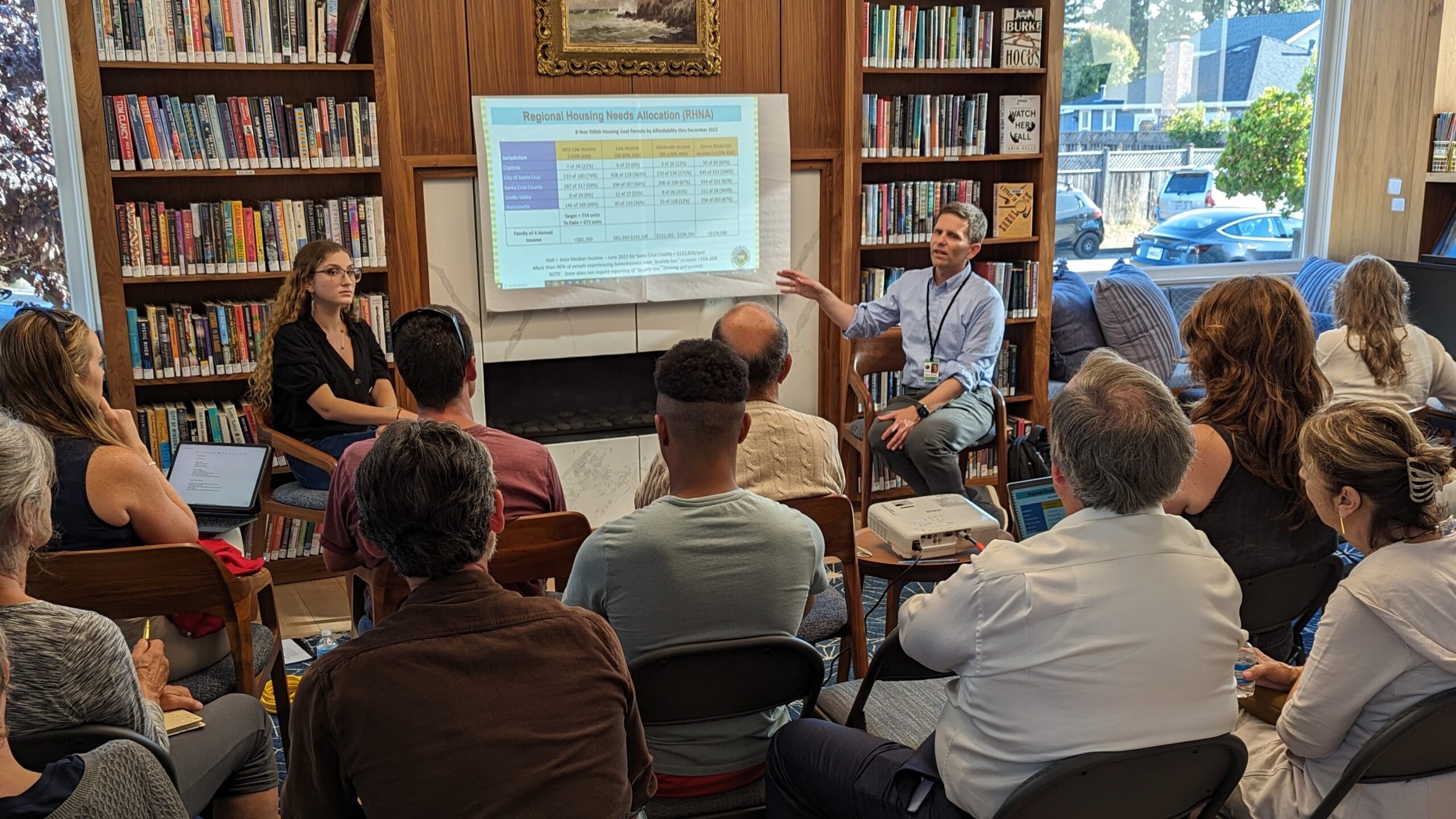
Robert Ratner talks about solutions to homelessness at a meeting at Garfield Park Branch Library in Santa Cruz in August 2023. Ratner is director of Santa Cruz County’s Housing for Health Division. (Stephen Baxter — Santa Cruz Local file)
SANTA CRUZ >> A recent state report about two California cities’ homeless services spending echoes concerns raised in a 2023 Santa Cruz Local investigation about how money is spent on homeless services in Santa Cruz County.
An April 9 California State Auditor’s Office report found that the cities of San José and San Diego have not tracked homeless services spending and have not sufficiently evaluated the effectiveness of different programs. Similar critiques have been made in Santa Cruz County, although county leaders have made recent strides towards transparency.
Some local homelessness response leaders said they worried that the state report might lead California lawmakers to slash homelessness spending and undo recent progress to reduce the number of unhoused people in Santa Cruz County.
“When I read through the report, I think it doesn’t match what I feel about our data or the oversight that we have at the local level,” said Tom Stagg, chief initiatives officer of nonprofit Housing Matters.
Though Santa Cruz County collects data on the success of individual programs, measuring that success can be reductive because programs often work in tandem, said Robert Ratner, director of the County of Santa Cruz’s Housing for Health Division.
However, county staff use success metrics to help prioritize programs for federal funding. But because state authorities fund homeless services through a patchwork of one-time grants bound to specific uses, county leaders cannot necessarily boost funding for one program that’s working better than another.
“The idea that we would have enough money that we can move around to decide where to invest it is a nice dream, but it’s not real,” Ratner said. He blamed the state’s funding model and a lack of consistent funding for some problems outlined in the state report.
Tallying homeless services spending
Leaders in San José and San Diego do not report total homelessness spending, according to the state report. Santa Cruz Local found the same was true for the City and County of Santa Cruz in a three-part series on homeless services spending published in May 2023. In August, Santa Cruz County leaders reported a partial total.
Calculating a comprehensive total isn’t easy. The bulk of the county’s homelessness response is funded by a shifting matrix of state and federal grants, most of which are restricted to specific programs or costs. Grants and local money pay for county-run programs and contracts with nonprofits.
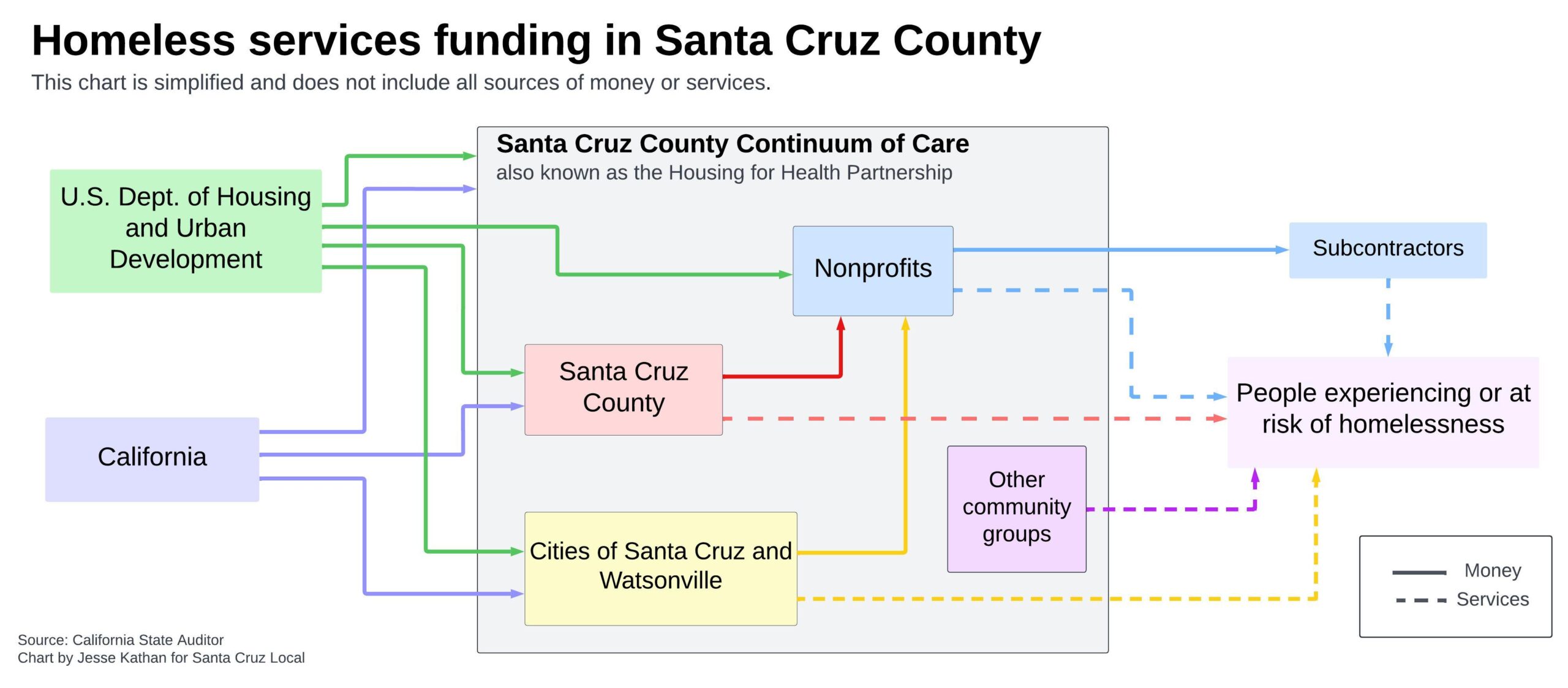
Money for many homeless services in Santa Cruz County flows from state and federal grants to the county government and the county’s Continuum of Care. Each California county is part of a continuum of care that coordinates services for people who are homeless or at risk of homelessness. The continuum applies for state and federal money and directs it to local agencies and nonprofits.
The policy board that governs the continuum includes county supervisors Justin Cummings and Manu Koenig, Santa Cruz Mayor Fred Keeley, and several other government and nonprofit leaders.
The board oversaw about $23 million of homelessness spending from July 2022 to July 2023 in county services and grants to nonprofits, according to a Continuum of Care report. Nearly 90% of the money came from state or federal grants. The money included:
- $9 million for rapid rehousing, which gives people at risk of homelessness short-term rent money.
- $6.3 million for permanent supportive housing, typically for people with disabilities.
- $3.8 million for temporary housing and for safe parking for people who live in vehicles.
- $2.2 million for the Housing Assistance Fund, which gives one-time grants for housing.
- $1 million for homeless prevention.
- $750,000 for outreach and connection services.
The total doesn’t include services administered by the county’s Health Services Agency, such as the Homeless Person’s Health Project.
Evaluating the effectiveness of homeless services spending
San José and San Diego did not effectively track and report the outcomes of their homeless services, according to the state report.
San Diego answered the report with a pledge to more thoroughly evaluate each homelessness program. But in a written statement, city staff cautioned that some measures of a program’s supposed effectiveness can be unhelpful.
Judging programs based on the number of participants who found permanent housing can punish service providers for a tight and costly housing market outside their control, they wrote.
And metrics can even create perverse incentives for nonprofits, they wrote. For example, a mandate that a shelter must serve a certain number of people in a year may lead shelter operators to kick people out before they find other housing.
Ratner said he is also cautious about measuring individual programs against each other. The number of people in a program who found housing does not tell the whole story of a project’s success, because people often use multiple programs, he said.
Santa Cruz County and its Continuum of Care use data to prioritize programs for federal funding. The ranking is informed by a program’s success rate in accomplishing their goals, and how well the programs collect data on cases and outcomes. “Those agencies that have poor outcomes and lower data quality end up on the bottom, and they’re the most at risk of losing funding,” Ratner said.
But “just looking at the programs without the full context is, I think, very misleading,” Ratner said during an April 17 meeting of Santa Cruz County’s Continuum of Care policy board. “We can run reports on individual projects and agencies and what percentage of people got into housing. However, the success of a given agency is often dependent on another resource being paired in with it, and who they’re serving.”
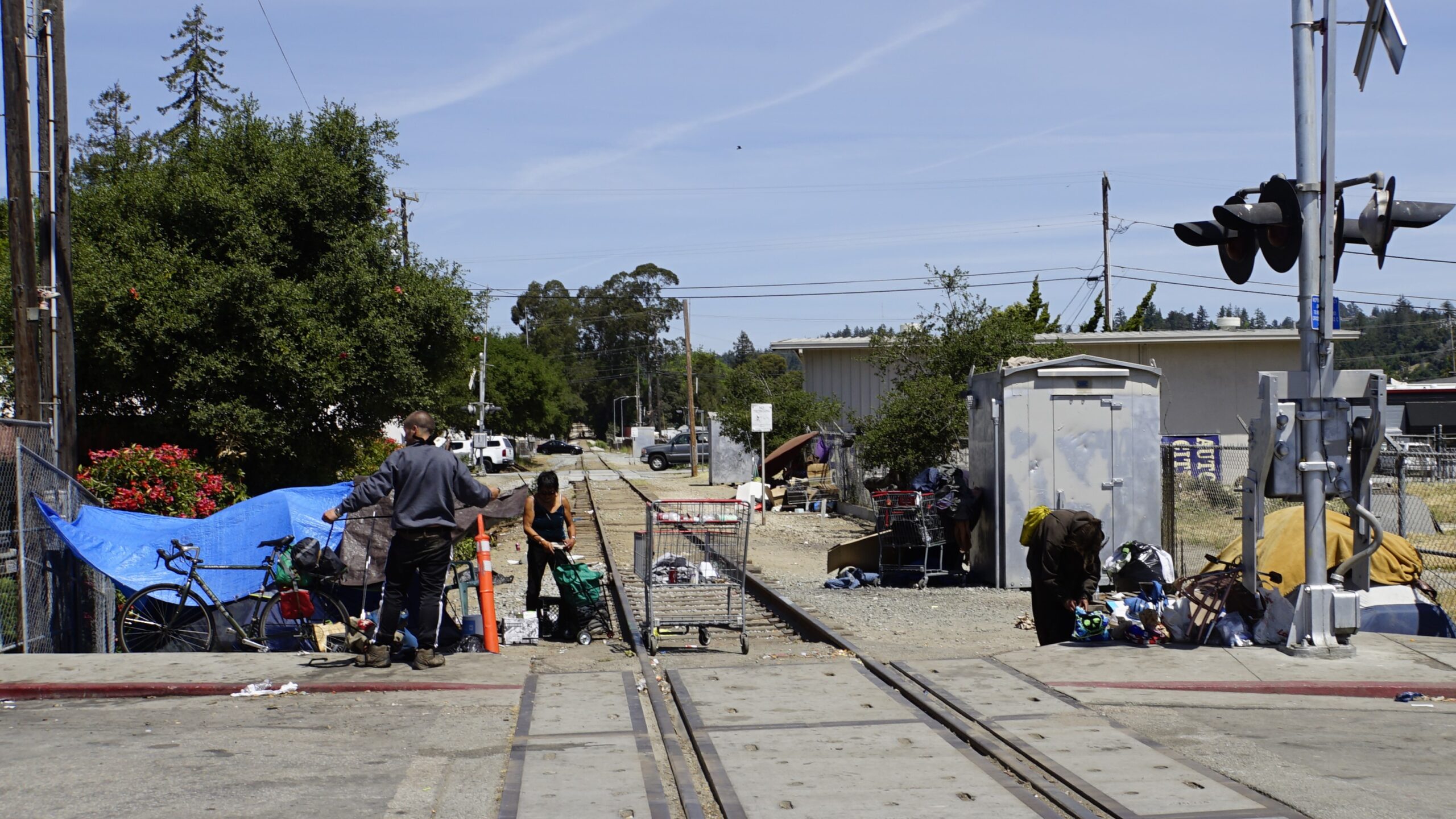
Tent camps line the railroad tracks at Coral Street in Santa Cruz in 2020. (Kara Meyberg Guzman – Santa Cruz Local file)
Effective homeless services
For example, the Association of Faith Communities runs a program that shelters people in churches and other houses of worship on a rotating basis. People in that program have found permanent homes at a higher rate than people in Santa Cruz city shelters, but that could be because the people who participate in AFC already have resources like a vehicle, money, or a network of friends and family to help them rotate between those shelters.
Similarly, an RV parking program operated by The Free Guide at the National Guard Armory is more successful in finding people housing than the neighboring tent camp managed by the Salvation Army. But the RV park provides more services to participants to help them find housing, and serves people who already have enough resources to have and maintain an RV.
Programs that serve chronically homeless people may be more costly than those that serve people who have more recently lost housing, said Stagg, of Housing Matters.
“The most visible people that are experiencing homelessness, the most likely to die, require more resources to get into housing and to stay in housing than individuals that don’t have as many barriers, or as significant barriers,” he said.
Santa Cruz Local correspondent Tyler Maldonado contributed to this report.
Read more
- Santa Cruz County leaders outline results of more than $23 million in homeless services spending – Aug. 25, 2023
- How homeless services money has been spent in Santa Cruz County — May 5, 2023
- Podcast: How homeless services money is spent in Santa Cruz County — Aug. 2, 2023
- Podcast: How Santa Cruz County could solve chronic homelessness — Dec. 17, 2021
Jesse Kathan is a staff reporter for Santa Cruz Local through the California Local News Fellowship. They hold a master's degree in science communications from UC Santa Cruz.


